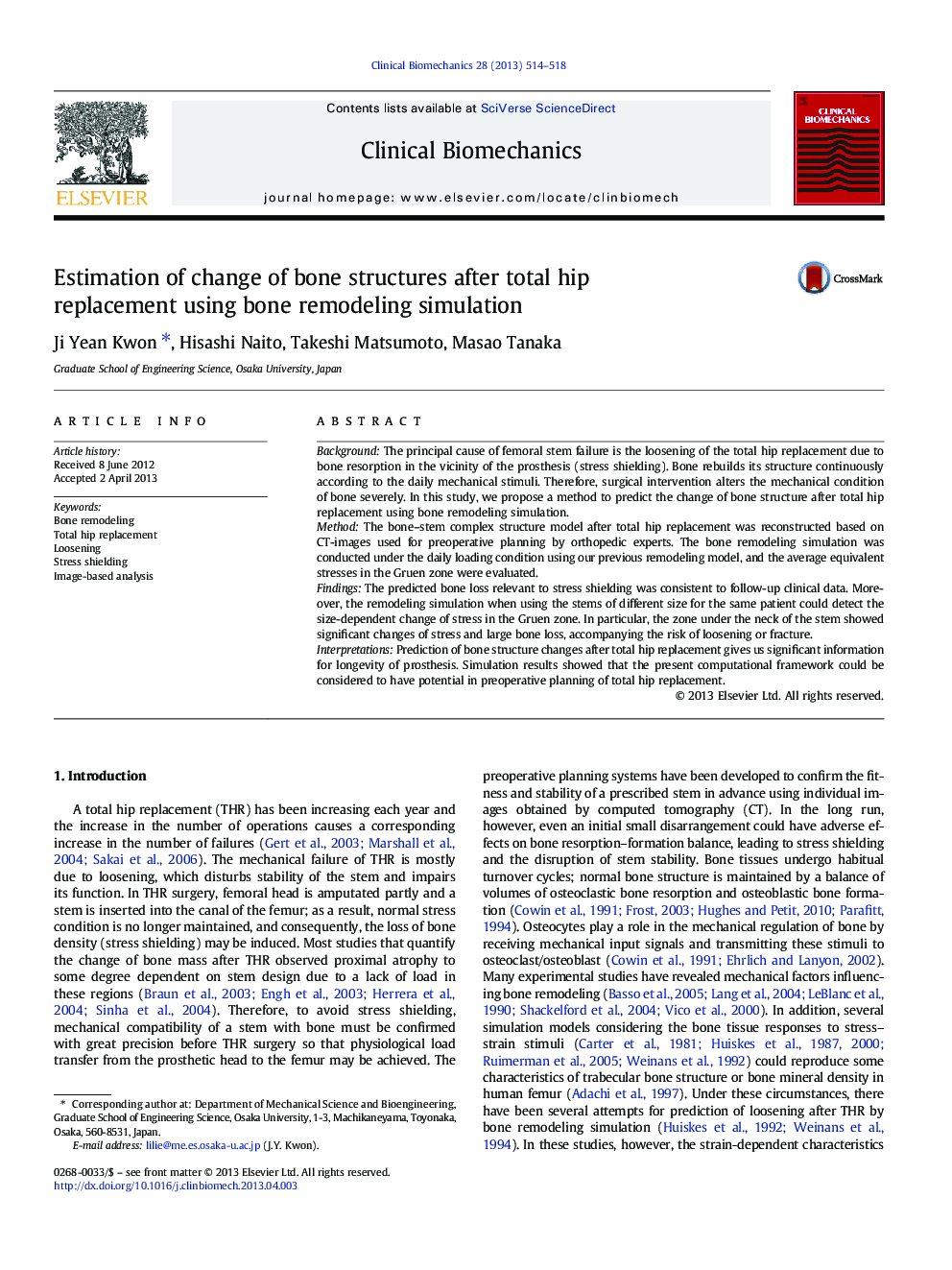| Article ID | Journal | Published Year | Pages | File Type |
|---|---|---|---|---|
| 4050697 | Clinical Biomechanics | 2013 | 5 Pages |
BackgroundThe principal cause of femoral stem failure is the loosening of the total hip replacement due to bone resorption in the vicinity of the prosthesis (stress shielding). Bone rebuilds its structure continuously according to the daily mechanical stimuli. Therefore, surgical intervention alters the mechanical condition of bone severely. In this study, we propose a method to predict the change of bone structure after total hip replacement using bone remodeling simulation.MethodThe bone–stem complex structure model after total hip replacement was reconstructed based on CT-images used for preoperative planning by orthopedic experts. The bone remodeling simulation was conducted under the daily loading condition using our previous remodeling model, and the average equivalent stresses in the Gruen zone were evaluated.FindingsThe predicted bone loss relevant to stress shielding was consistent to follow-up clinical data. Moreover, the remodeling simulation when using the stems of different size for the same patient could detect the size-dependent change of stress in the Gruen zone. In particular, the zone under the neck of the stem showed significant changes of stress and large bone loss, accompanying the risk of loosening or fracture.InterpretationsPrediction of bone structure changes after total hip replacement gives us significant information for longevity of prosthesis. Simulation results showed that the present computational framework could be considered to have potential in preoperative planning of total hip replacement.
